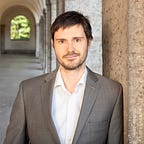Albert Speer: From Architect to Hitler’s Confidant
The Transformation of a Young Architect in 1930s Berlin
Albert Speer, a name synonymous with both architectural genius and wartime controversy, played a pivotal role in shaping Nazi Germany’s grandiose vision during the tumultuous years leading up to and during World War II.
While initially known for his architectural talents, Speer’s career took a dark turn as he became deeply entwined with Adolf Hitler’s inner circle, ultimately serving as Hitler’s chief architect and later as Minister of Armaments and War Production.
In this post, we will delve into the intriguing life of Albert Speer, examining his rise to power, architectural projects, and his controversial legacy.
The Ambitious Architect
In the bustling streets of Berlin in 1930, a 25-year-old Albert Speer and his wife, Margret, reveled in the vibrant metropolis. They had escaped the intellectual confines of their hometown of Mannheim, where Albert’s path had been laid out for him by a wealthy architect father.
While his father had envisioned him as a mathematician, Albert was drawn to architecture. He pursued his studies at the Technical University of Berlin, taking his first steps toward a career that would shape not only his life but also the course of history.
Berlin’s Political Cauldron
Berlin in the 1930s was a city on the brink of transformation, both architecturally and politically. The Technical University, where Albert Speer studied, became a hotspot for the rising National Socialist movement. In this environment, 66% of students in Speer’s field of study embraced the brown-shirted ideology.
In December 1930, Adolf Hitler himself announced a rally for students, and the arrival of the Nazi leader was accompanied by raucous demonstrations. Among the crowd was Albert Speer, who found himself in the midst of a fervent political awakening.
Hitler’s Captivating Words
As the young architect sat in a crowded hall, the atmosphere was electric. Hitler took the stage, and his words left an indelible mark on Speer. The impassioned speech resonated with the aspiring architect. Hitler’s message transcended mere politics; it spoke to the very essence of culture and the future of Germany. For Speer, it was a revelation.
“Man does not live by bread alone,” Hitler declared, and the vision of a grand German cultural center known as the “Haus des Deutschen Volkes” took shape in Speer’s mind. Little did he know that his life was about to take a dramatic turn.
The Path to the Nazi Party
Just three months after that fateful evening, Albert Speer joined the National Socialist German Workers’ Party (NSDAP). However, he did not engage as a brawler or street fighter. Instead, he was captivated by the new challenges that came with Hitler’s vision. Speer saw beyond the fanatic politician; he saw a thwarted builder.
Speer’s architectural career began with modest projects, such as renovating the Bauhaus in Berlin, but his true breakthrough came when he was entrusted with designing the grand mass rallies and monuments that would become symbols of Nazi propaganda. His vision for the Tempelhofer Feld mass rally and the Nuremberg Party Rally Grounds reflected the ambition and megalomania of the Nazi regime.
Hitler was captivated by Speer’s designs, appointing him as the regime’s chief architect and director of artistic design for major events.
Building a New Reich
As Speer’s influence grew, so did his architectural projects. He envisioned grand structures like the Zeppelinfeld and the planned “Germania,” a colossal reimagining of Berlin as the world capital of the Third Reich.
These ambitious plans, however, were not without their controversies. Speer’s use of forced labor, including prisoners from concentration camps, for his projects would later become a stain on his legacy.
Architect of War
Speer’s transition from architect to war minister marked a critical turning point in his career. Hitler appointed him as Minister of Armaments and War Production, entrusting him with the daunting task of sustaining Germany’s war effort.
Under Speer’s leadership, the German war machine reached unprecedented levels of production. However, this period also witnessed the extensive use of slave labor and the exploitation of occupied territories.
Challenges and Controversies
As the war neared its end, Speer became increasingly aware of Germany’s impending defeat. Despite his efforts to extend the conflict, the tide was turning against the Axis powers. In his bid to secure a place for himself in the post-war world, Speer secretly attempted to negotiate Germany’s surrender with the Allies.
This maneuver would later lead to his arrest, trial, and conviction for war crimes and crimes against humanity at the Nuremberg Trials.
Conclusion
Albert Speer’s life is a complex mixture of architectural brilliance, political ambition, and moral ambiguity. His legacy remains marred by his complicity in the atrocities committed by the Nazi regime, even as he attempted to distance himself from its horrors during his trial.
Albert Speer serves as a stark reminder of the dualities that exist within individuals who wield great power, and his story continues to be a subject of historical fascination and debate.
As we conclude this article, I want to express my gratitude for joining me on this journey. If you enjoyed reading, please follow me for more engaging content. Don’t forget to give it a round of applause (clap) to show your appreciation. Consider becoming a Medium member to access premium articles and support writers like me. If you’re feeling generous, you can also support me with a donation via PayPal. Thank you for being a part of this adventure. Let’s stay connected and continue inspiring each other!
Disclosure: ChatGPT 3.5 was used to create some parts of this text.
